As a beginner, you may be curious about what trekking in Nepal is actually like. Am I able to hire a guide? Are the trails doable? What sort of accommodations might you anticipate? There's good news: Nepal is quite beginner-friendly. These magnificent mountain routes are safe and comfortable for even those without expert skills, thanks to their well-marked paths, friendly inhabitants, quaint teahouses, and modest elevation climbs.
This blog explores the five best treks for beginners, each of which provides a distinctive opportunity to take in Nepal's breathtaking scenery and welcoming culture. Post-pandemic, Nepal has improved trekking infrastructure in beginner routes, making it even more accessible.
Digital permits and better road access have made these treks smoother in 2025. They are short (3–8 days), family-friendly, and beginner-approved, making them the best way to ease into Nepal’s Himalayan trekking culture.
Five Best Treks for Beginners in Nepal
1. Langtang Valley Trek
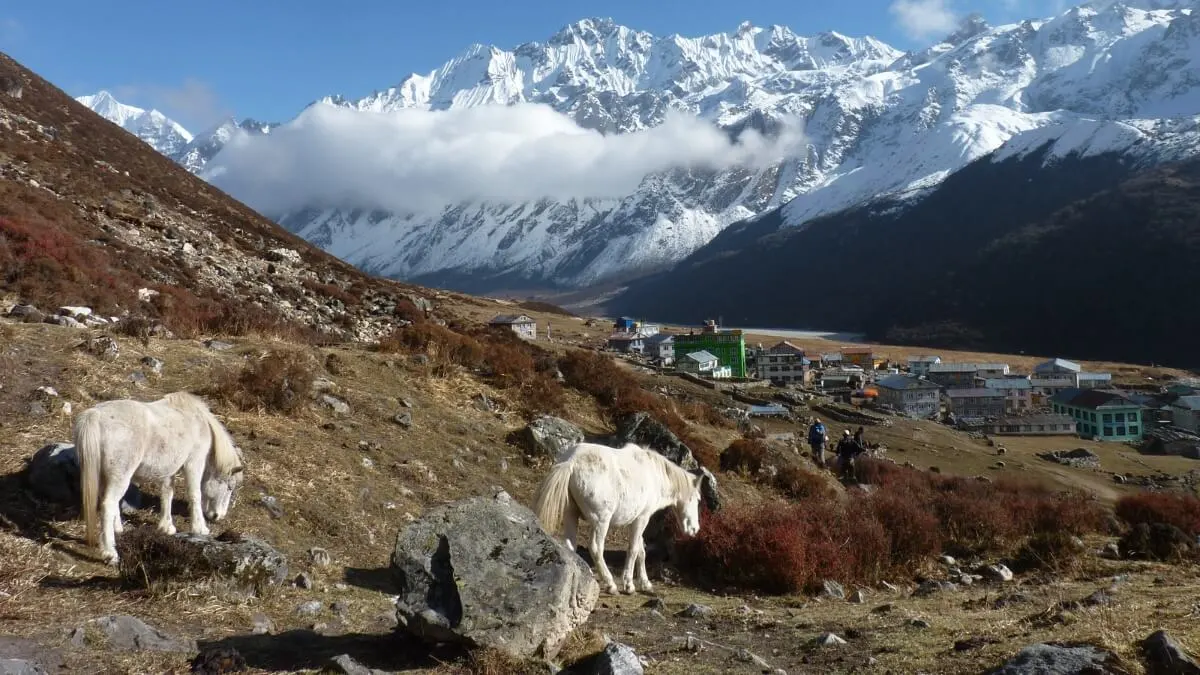
Highlights of Langtang Valley Trek
- The Langtang Valley Trek offers stunning alpine scenery along with rich cultural experiences of the Langtang region.
- You’ll explore charming Tamanf villages, Tibetan villages & Buddhist prayer wheels and see breathtaking valley views, forests, waterfalls, and snow-capped Himalayan peaks like Langtang Lirung.
- The trek has moderate elevation gain, making it accessible for beginners with reasonable fitness.
- The trek starts at Syabrubesi or Dhunche, allowing easy logistics and transport.
- It passes through Langtang National Park, home to diverse wildlife such as red pandas and musk deer.
If it’s your first trek, the Langtang Valley is the perfect balance of breathtaking scenery and manageable trails you’ll walk through peaceful Tamang villages and end your days in cozy teahouse lodges. It takes over 7–10 days. The route begins with a scenic drive from Kathmandu to Syabrubesi, then takes you through lush forests and traditional Tamang villages to Langtang Village and finally to Kyanjin Gompa, a peaceful Himalayan settlement with panoramic mountain views.
You will experience a moderate ascent with the highest point at Kyanjin Ri (4,773 meters). You should avoid altitude sickness. Along the way, you will experience unique Tibetan Buddhist culture, enjoy local foods like yak cheese, and explore glacial landscapes. You’ll also cross many suspension bridges draped with prayer flags. The best time to trek is during spring (March to May) and autumn (September to November), when weather conditions are most favorable.
Quick Fact
- Start/End Location: Syabrubesi & Dhunche
- Trek Duration: 7–10 days
- Maximum Altitude: 4,773 m (Kyanjin Ri)
- Best Time to Visit: Spring & Autumn (March–May, Sept–Nov)
Planning your dream adventure? Start with Nepal Gateway Trekking for trusted Himalayan journeys.
2. Ghorepani Poon Hill Trek
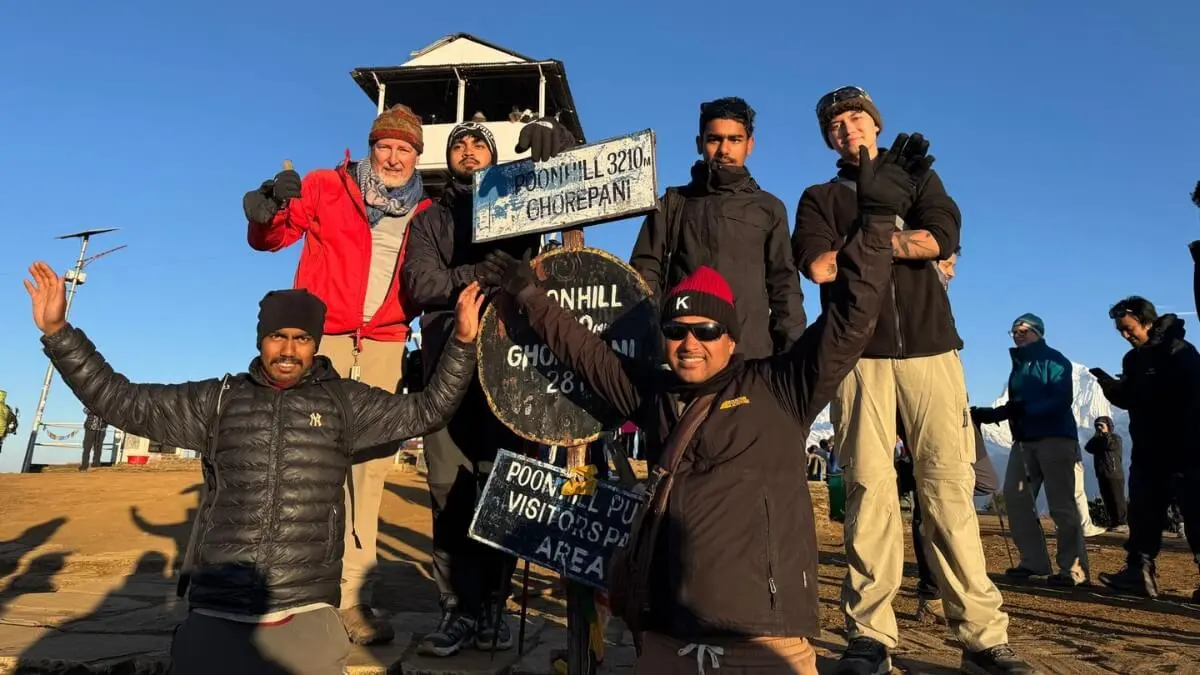
Highlights of Ghorepani Poon Hill Trek
- In the Annapurna region, the Ghorepani Poon Hill Trek offers breathtaking mountain views together with a wealth of cultural activities.
- From Poon Hill, the Ghorepani Poon Hill Trek provides a panoramic sunrise vista of the Annapurna and Dhaulagiri ranges, which are illuminated by golden light.
- You will visit Gurung and Magar villages, such as Ghandruk and Ghorepani, where you may experience the warmth and culture of the locals.
- Because of its moderate difficulty, this walk is appropriate for first-timers and people with a reasonable degree of fitness, letting you enjoy the trip without feeling overburdened.
- It offers a range of landscapes that change with elevation as it travels through verdant rhododendron forests, terraced fields, and picturesque valleys.
- This trek is only a few hours from Pokhara so it is a well-liked option for anyone wishing to take in the Himalayan splendor without having to make a lengthy journey.
- Your hiking trip will be made more beautiful by the region's varied flora and fauna, which includes a wide variety of plants and birds.
Ghorepani Poon Hill Trek is known as one of the easiest treks in Nepal. It is the perfect option if you’re looking for a low-key introduction to trekking in the Himalayas. From the well-known viewpoint at Poon Hill, which is 3,210 meters above sea level, this short hike usually lasts 4 to 7 days. It gives breathtaking sunrise views of the Annapurna and Dhaulagiri mountains.
The trail passes through the cultural Gurung and Magar villages, which begin at Nayapul and end at Siwai. It is a favorite among families, casual hikers, and new trekkers because of its accessibility and stunning landscape. The seasons with the nicest weather and the best views of the mountains are spring (March to May) and fall (October to December).
Quick Fact
- Start/End Location: Nayapul to Siwai
- Trek Duration: 4–7 days
- Maximum Altitude: 3,210 m (Poon Hill)
- Best Time: Spring (March–May) and Autumn (October–December)
3. Pikey Peak Trek
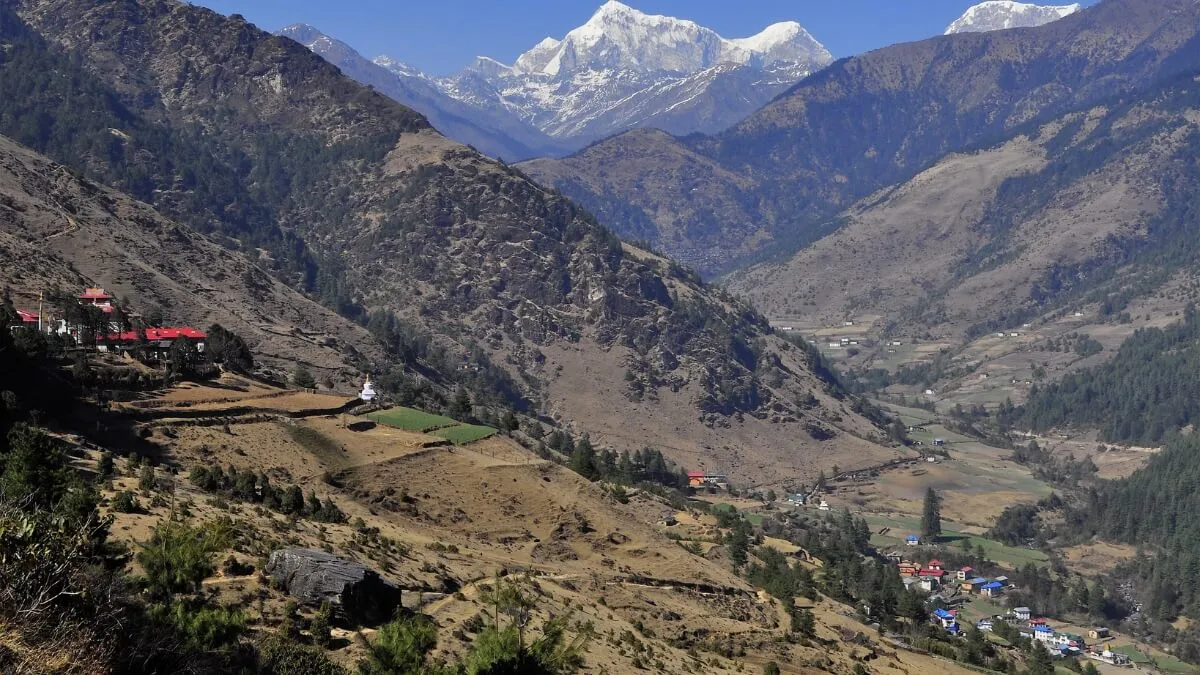
Highlights of Pikey Peak Trek
- Pikey Peak Trek offers panoramic views of Mount Everest and the surrounding peaks from Pikey Peak, while trekking at a lower altitude.
- The trek provides an authentic experience of Sherpa culture, as you pass through traditional Nepali villages.
- Unlike the more frequented Everest Base Camp trek, the Pikey Peak route offers a peaceful trekking experience without the hustle and bustle.
- The trail features diverse landscapes, from lush forests and terraced fields to high-altitude meadows, providing a rich tapestry of natural beauty.
The Pikey Peak Trek is perfect for first-timers since it provides breathtaking views of Mount Everest from a lower elevation. This trek offers a cultural experience, with routes through Sherpa communities and Buddhist monasteries. It is less crowded than the Everest Base Camp route. The 5- to 7-day journey starts at Ringmu and ends at Junbesi.
It reaches a maximum elevation of 4,065 meters. Spring and fall are the ideal times to go because of the clear weather and breathtaking mountain views. This walk is ideal for beginners looking for an unforgettable Himalayan experience since it blends stunning landscape, cultural diversity, and peace.
Quick Fact
- Start/End: Ringmu to Junbesi
- Duration: 5-7 days
- Max Altitude: 4,065m (Pikey Peak)
- Best Time: March-May and October-December
4. Mardi Himal Trek
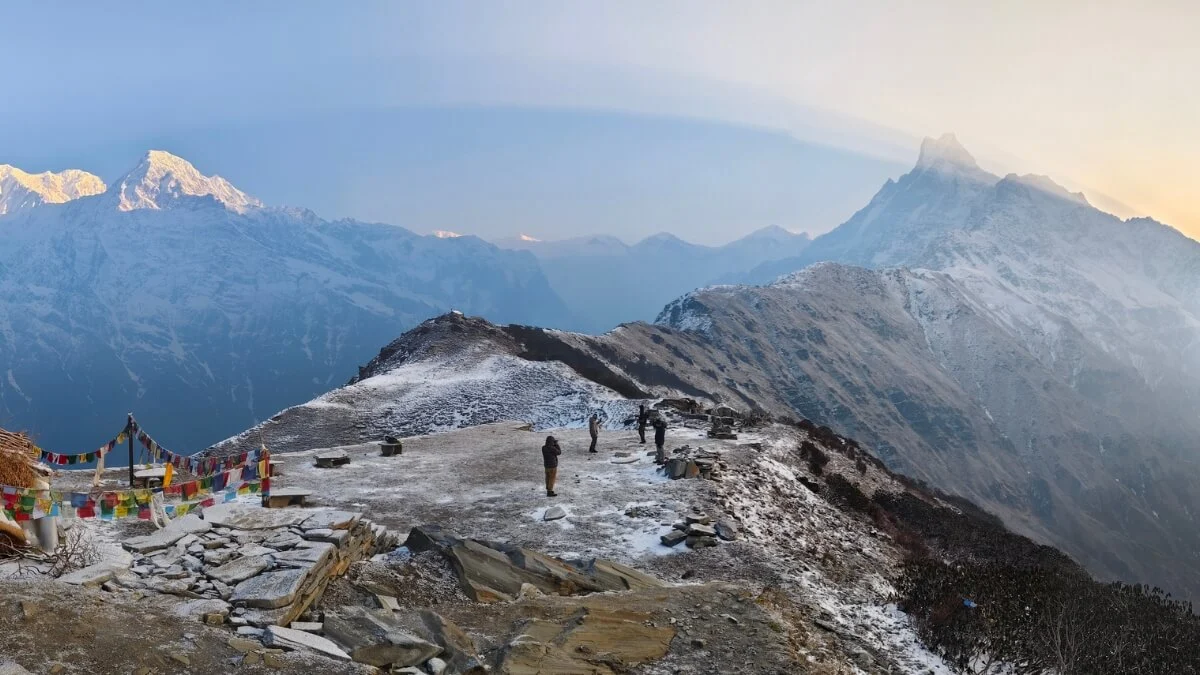
Highlights of Mardi Himal Trek
- Mardi Himal Trek offers close-up views of the Machapuchare (Fishtail) and the Annapurna range.
- Unlike the more popular trekking routes in the Annapurna region, the Mardi Himal Trek features tranquil trails. It allows you to immerse yourself in the natural beauty and serenity of the Himalayas without the crowds.
- This trek is ideal for those with limited time; it can be completed in a short duration, making it a perfect choice for a quick Himalayan getaway.
A little-known Himalayan treasure, the Mardi Himal Trek provides breathtaking up-close views of the Annapurna range and Machapuchare (Fishtail). The trip, which is well-known for its beautiful and quiet pathways, offers a more private and tranquil trekking experience by avoiding the throngs that are common on more well-traveled routes.
For those looking for a quick yet amazing Himalayan journey, it is perfect. It typically takes four to six days to finish the trek, which begins in Dhampus Phedi and concludes at Landruk. At 3,550 meters, High Camp is the highest point attained. The finest seasons to go are spring (March to May) and fall (October to December), when the weather is ideal for trekking comfort and unobstructed vistas.
Quick Fact
- Start/End: Dhampus Phedi to Landruk
- Duration: 4-6 days
- Max Altitude: 3,550m (High Camp)
- Best Time: March-May and October-December
5. Langtang Tamang Heritage Trek
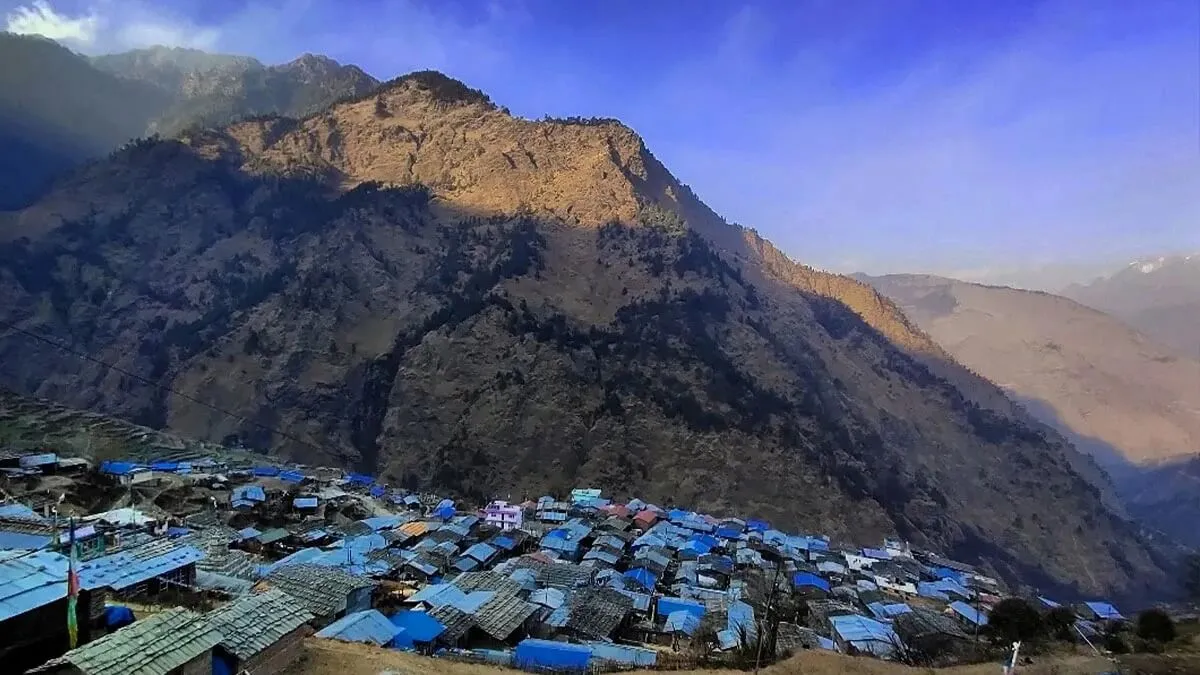
Highlights of Langtang Tamang Heritage Trek
- The main goal of the Langtang Tamang Heritage Trek is to experience the rich culture of the Tamang people by visiting traditional villages, talking to locals, and discovering their traditions and customs.
- You can complete the journey because of its very easy paths that wind through scenic scenery and quaint settlements.
- With amazing vistas of the Langtang mountain and verdant valleys, the Langtang Tamang Heritage Trek offers the perfect combination of cultural exploration and natural beauty.
The Langtang Tamang Heritage Trek offers hikers the Tamang way of life through a tour that combines breathtaking natural beauty with rich cultural experiences. It is ideal for those looking for a tranquil trekking experience enhanced by the customs and way of life of the Tamang people.
The hike, which usually lasts 5 to 7 days and reaches its highest point at Nagthali at 3,165 meters, begins and ends at Syabrubesi. Spring (March to May) and fall (October to December) are the greatest seasons to go on this walk because of the favorable weather for both hiking and taking in the beautiful surroundings.
Quick Fact
- Start/End: Syabrubesi
- Duration: 5-7 days
- Max Altitude: 3,165m (Nagthali)
- Best Time: March-May and October-December
Other beginner-friendly options include the Everest View Trek and Helambu Trek, both short and scenic.
Best Time of Year for Beginner Treks
The best time for treks in Nepal are spring and autumn. It offers ideal weather, clear sky and views of mountains and stunning natural beauty. The right season enhances safety, comfort, and the overall trekking experience for beginners exploring Nepal’s beautiful trails.
- Spring (March–May): Clear skies, moderate temperatures, and blooming rhododendrons and other flora make spring a favorite time for trekking. Wildlife is active, and the vibrant landscapes add color to your journey.
- Autumn (September–November): This season has stable weather, excellent visibility, and crisp mountain views. It is perfect for clear panoramas of Annapurna, Everest, and other peaks, making it a peak trekking time for beginners.
- Winter(December–February) and Monsoon(June–August): While winter is colder and monsoon wetter, both seasons offer quieter trails and fewer tourists. Experienced beginners who prefer solitude and don’t mind cooler or wetter conditions may enjoy trekking during these periods, but proper gear and preparation are essential.
How to Prepare for Your First Trek as a Beginner?
You should arm yourself with appropriate equipment, and seek out the advice of people who are most familiar with the routes.You may make lifelong memories and welcome the adventure that lies ahead if you prepare properly.
1. Fitness and Stamina-Building Tips
- Start Training Early: Prepare your body with regular walking, hiking, and cardiovascular exercise at least 6–8 weeks before your trek. Incorporate uphill walking and, if possible, stair climbing to build leg strength.
- Build Endurance: Go for weekly hikes on local trails with a backpack, gradually increasing distance and elevation. Push for treks of 3–5 hours to mimic trek days in Nepal.
- Focus on Strength and Flexibility: Include stretches, squats, lunges, and core workouts for overall fitness. Flexibility helps prevent injuries and eases altitude adaptation.
- Consistency is Key: Regular, varied exercise builds stamina and prepares you for multiple days of walking in the Himalayas.
2. Essential Trekking Gear, Documents and Clothing Layers
- Trekking Boots: Invest in waterproof, well-fitted boots and break them in before your trip to avoid blisters.
- Layered Clothing: Use moisture-wicking base layers, thermal insulation, and a windproof, waterproof jacket. Layering keeps you comfortable in changing mountain conditions.
- Daypack: Carry a comfortable backpack for daily essentials: water bottle, snacks, rain jacket, extra layers, and sun protection.
- Accessories: Pack trekking poles, a hat, gloves, sunglasses, a headlamp, and a buff/scarf for warmth and dust protection.
- Packing List: Don’t forget essentials like first-aid kit, personal medications, sunscreen, hydration system, lightweight toiletries, and teahouse comforts (sleeping bag liner, power bank).
- Trek Permits & Documentation: Check you have all necessary permits (TIMS, ACAP, Langtang National Park Fees) before starting your trek.
3. Importance of Trekking with a Local Guide
- Safety and Navigation: Local guides offer expert route-finding, help manage risks like altitude sickness, and assist in emergencies.
- Cultural Experience: Guides interpret local customs, introduce you to Sherpa, Tamang, and Gurung cultures, and enhance your understanding of Nepali traditions.
- Support and Logistics: A guide coordinates transportation, teahouse lodges, and entry permits, making your trek hassle-free.
- Community Support: Hiring local guides and porters supports village economies and stronger local partnerships.
If you think you are not fit for the above treks, then you should definitely choose Nepal Gateway Trekking's customize your trip service where you can customize your trek according to your budget and fitness level.
Essential Tips for Beginners
- Hire a Guide/Porter: For safety, navigation, and support of local communities.
- Safety & Health: Stay hydrated, acclimatize properly, and carry a first-aid kit.
- Gear & Packing: Use sturdy boots, layered clothing, rain gear, and trekking poles.
- Choose the Right Trek: Match trek difficulty and length to your fitness level.
- Acclimatization: Ascend gradually, take rest days, watch for altitude sickness.
- Trek Permits: Secure all necessary permits like TIMS and ACAP before trekking.
- Teahouse Lodges: Book in advance, enjoy local hospitality, and support communities.
Final Thoughts
Nepal has many beginner options, not just the five listed. These five best treks for beginners will get you started, offer short distances, breathtaking mountain vistas, and genuine cultural encounters. Trekking in Nepal is more than just climbing mountains. It is a voyage through colorful cultures, old traditions, and stunning landscapes that will leave you with amazing experiences.
Contact Nepal Gateway Trekking today and let our local guides customize the perfect beginner-friendly trek for you.
FAQs
Is the Poon Hill Trek suitable for families with kids?
Yes, the Poon Hill Trek is suitable for families with kids. Its has moderate difficulty and well-maintained trails. The trek offers stunning views and can be completed in a short duration.
How difficult is Pikey Peak Trek for first-timers?
The Pikey Peak Trek is not difficult for first-timers. The trek involves some steep sections. But the overall trek is rewarding with beautiful views and can be completed in a few days.
What is the difference between Langtang Valley and Langtang Tamang Heritage Treks?
The Langtang Valley Trek has stunning natural beauty and landscapes of the Langtang region, while the Langtang Tamang Heritage Trek focuses on cultural experiences with local Tamang communities.
Do I need prior trekking experience for the Mardi Himal Trek?
No, you do not need prior trekking experience for the Mardi Himal Trek. The trek is a beginner-friendly but a basic level of fitness is recommended to enjoy the trek and handle the moderate altitude.
Can beginner treks be done without a guide?
Yes, beginner treks can be done without a guide. But guides can enhance the experience and provide support in case of emergencies.
What’s the maximum altitude for beginner-friendly treks?
The maximum altitude for beginner-friendly treks typically ranges from 3,000 to 4,500 meters (9,800 to 14,800 feet). This altitude allows trekkers to enjoy stunning views while minimizing the risk of altitude sickness.









